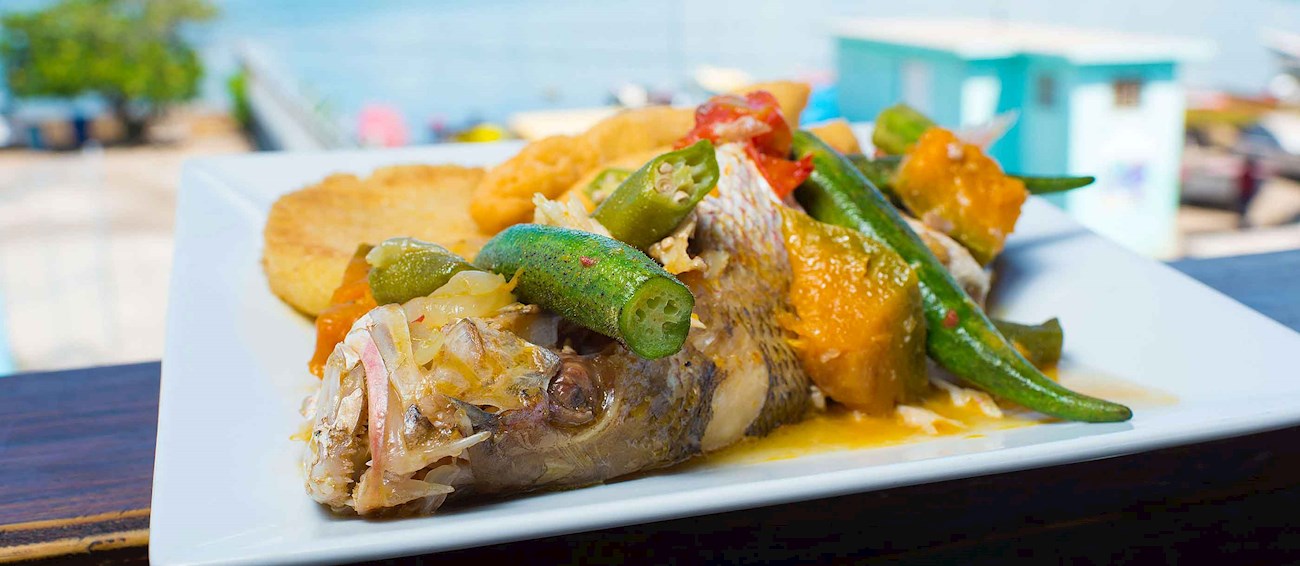Jamaican fish tea is a light soup or a fish broth seasoned with salt, pepper, and thyme, unlike other Jamaican soups that are usually hearty and thick. It features small, inexpensive fish such as herrings, and vegetables such as bell peppers, carrots, onions, and green bananas.
Some believe that the soup is a strong aphrodisiac, and it can be found throughout Jamaica, where it is usually sold at beach shacks.
This healthy and flavorful Jamaican dish is made by cooking firm white fish such as snapper in a sauce consisting of butter, vegetables such as tomatoes and onions, and herbs such as thyme, garlic, and black pepper. The fish is usually seasoned with salt and garlic, while the sauce is additionally flavored with scotch bonnet chilis for a spicy kick.
Once it's done, Jamaican steamed fish can be consumed on its own or paired with rice, boiled bananas, and crackers.
Ackee and saltfish is the national dish of Jamaica consisting of an unusual fruit of West African origin and any sort of dried and salted fish, usually cod, mahi mahi, or mackerel. The dish is very popular either as a nourishing Jamaican breakfast or as an appetizer served for lunch or dinner.
Ackee is a tricky ingredient due to its toxicity, so it is not safe to consume it until the vivid yellow meat and characteristical black seeds (three of them) are visible on the interior of the fruit. It was introduced to the island in the 18th century and looks like a smooth, reddish peach.
Brown stew fish is a Jamaican delicacy made by combining marinated and fried fish fillets with a brown sauce consisting of onions, garlic, ginger, tomatoes, butter, and water. The stew is often additionally seasoned with thyme and various types of hot peppers.
It is traditionally served with rice and peas or yams and bananas on the side.
TasteAtlas food rankings are based on the ratings of the TasteAtlas audience, with a series of mechanisms that recognize real users and that ignore bot, nationalist or local patriotic ratings, and give additional value to the ratings of users that the system recognizes as knowledgeable. TasteAtlas Rankings should not be seen as the final global conclusion about food. Their purpose is to promote excellent local foods, instill pride in traditional dishes, and arouse curiosity about dishes you haven’t tried.




